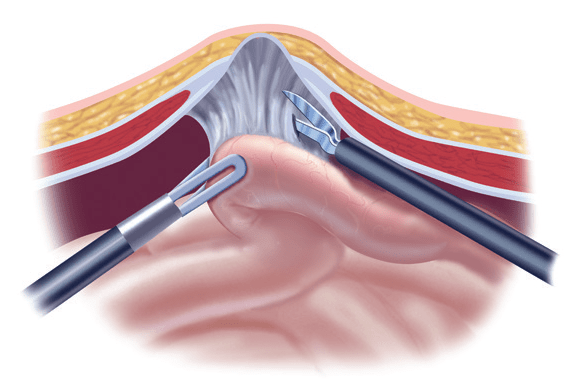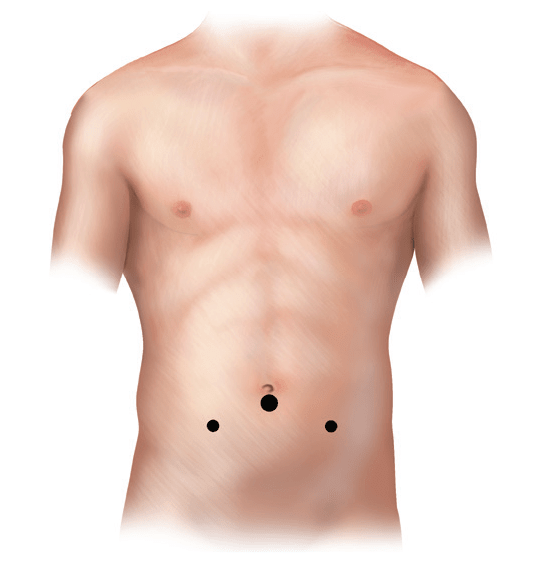Diagnostic Laparoscopy - Minimally Invasive Diagnosis
WHAT IS DIAGNOSTIC LAPAROSCOPY?
A laparoscope is a telescope designed for medical use. It is connected to a high intensity light and a high-resolution monitor. In order for the surgeon to see inside your abdomen, a hollow tube (port) is placed through your abdominal wall, and the laparoscope is inserted into the port. The image of the inside of your abdomen is then seen on the monitor. In most cases, this procedure (operation) will be able to diagnose or help discover what the abdominal problem is.
WHY IS DIAGNOSTIC LAPAROSCOPY PERFORMED?
- Abdominal pain.
- Ascites.
- Liver disease.
- “Second look” procedure or cancer staging.
- Others.

Preparation for the Procedure
WHAT TESTS ARE NECESSARY BEFORE LAPAROSCOPY?
- Ultrasound
- CT Scan
- Routine blood test analysis,
- Chest X-ray or electrocardiogram
WHAT TYPE OF ANESTHESIA IS USED?
Diagnostic laparoscopy is usually performed either under general anesthesia but may be done under local anesthesia with sedation in selected cases. With your help, your surgeon and an anesthesiologist will decide on a method of anesthesia to perform safe and successful surgery.
- LOCAL anesthesia can be injected into the skin of the abdominal wall to completely numb the area and allow safe placement of a laparoscope. Most patients feel a short-lived “bee sting” that lasts a second or two.
- GENERAL anesthesia is given to those patients who are not candidates for “twilight” sleep or who want to be completely asleep. General anesthesia may be preferable in patients who are young, who cannot lie still on the operating table, or have a medical condition that is safer to perform in this manner. Some patients end up having a general anesthesia even though they prefer local anesthesia with sedation, as the appropriate anesthesia for laparoscopy differs from patient to patient.
What to Expect During the Procedure

- The surgery is performed under anesthesia (see above), so that you will not feel pain during the procedure.
- A port (a narrow tube-like instrument) is placed into the abdominal cavity in the upper abdomen or flank just below the ribs.
- A laparoscope (a tiny telescope) connected to a special camera is inserted through the port. This gives the surgeon a magnified view of the patient’s internal organs on a television screen.
- Other ports are inserted which allow your surgeon to see the internal organs and make a decision on the proper diagnosis or treatment.
- After the surgeon completes the operation, the small incisions are closed with absorbable sutures or with surgical tapes.
Expected Outcomes
WHAT COMPLICATIONS CAN OCCUR ?
Any procedure may have complications associated with it. The most frequent complications of any operation are bleeding and infection. There is a small risk of other complications that include, but are not limited to, injury to the abdominal organs, intestines, urinary bladder or blood vessels.
If you suffer with ascites, this ascites may leak from one of the operative sites, temporarily, before stopping.
In a small number of patients the laparoscopic method cannot be performed. The decision to perform the open procedure is a judgment decision made by your surgeon either before or during the actual operation if the surgeon feels that it is safest to convert the laparoscopic procedure to an open one, this is not a complication, but rather sound surgical judgment. The decision to convert to an open procedure is strictly based on patient safety.
WHEN TO CALL YOUR DOCTOR ?
Be sure to call your surgeon or physician if you develop any of the following:
- fever above 101 degrees F (39 C)
- drainage from or redness any of your incisions
- continued nausea or vomiting
- increasing abdominal swelling
- bleeding
- chills
- persistent cough or shortness of breath
- inability to urinate
- pain not controlled by medication
This brochure is not intended to take the place of your discussion with your surgeon about the need for a diagnostic laparoscopy. If you have questions about your need for a diagnostic laparoscopy, alternative tests, billing or insurance coverage, or your surgeons’ training and experience, do not hesitate to ask your surgeon or his/her office staff about it. If you have questions about the operation or subsequent follow-up, please discuss them with your surgeon before or after the operation.







